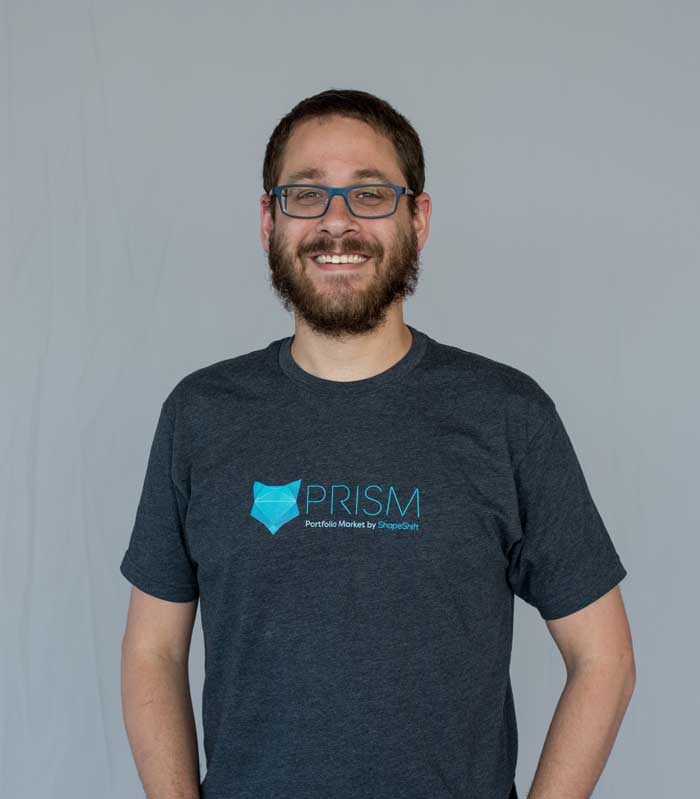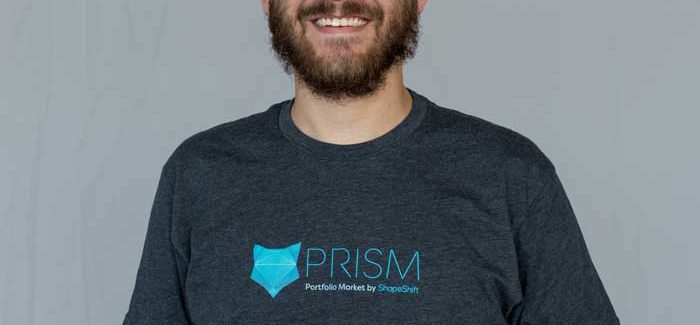By Peter Lee and Jon, COO of ShapeShift.io | 4/10/2018
ShapeShift – https://shapeshift.io/
Peter Lee: Hi Jon and welcome. Please tell us about yourself and about ShapeShift.
 Jon: My name is Jon and I am the COO of ShapeShift.io. I have been running operations and working on various phases of application development for more than 15 years, and for the past four years, my main focus has been ShapeShift.io.
Jon: My name is Jon and I am the COO of ShapeShift.io. I have been running operations and working on various phases of application development for more than 15 years, and for the past four years, my main focus has been ShapeShift.io.
ShapeShift is the fastest and safest digital asset exchange on earth. It allows both people and machines to easily convert from one type of digital asset (such as bitcoin) to another (such as ethereum) quickly, easily, without an account and with minimal friction.
Peter: Jon, let me jump on the bandwagon about ShapeShift’s ease of use and add that there are “No emails or passwords. No lengthy signup process. No accounts. No bid and ask orders. No friction. And no sending your money to be held on a centralized exchange.”
Peter: What benefits can users expect from using ShapeShift.io? (Tell us also how using ShapeShift helps in solving the ‘counterparty’ risk problem.)
Jon: Both people and machines (computers/robots) benefit from using ShapeShift. The main advantage is that ShapeShift allows for frictionless exchange of digital assets without ever taking custody of the assets involved. This means the user stays in control of their private keys, and thus, of their crypto assets.
Users are not exposed to large amounts of counterparty risk that comes from using a “normal” crypto exchange, which takes custody of their assets. This inherent counterparty risk has resulted in many high-profile hacking incidents where users and exchanges lost sizeable sums of digital wealth.
Peter: Please explain a little more about how computers and robots benefit from ShapeShift and why that matters to your average User that the robots are happy?
Jon: It matters for the average user as it allows all sorts of other applications to plug into ShapeShift. This means many people have the ability to use ShapeShift through these other applications without ever having to access ShapeShift directly or even know they are using the service. This allows ShapeShift to function very much as a piece of infrastructure for the whole ecosystem. In a perfect world, we are able to service users without them even having to know that they are using ShapeShift.
Peter: The benefits of using ShapeShift are relatively easy to understand. As a User I love the simplicity.
And, as a User, my next questions would be – how do you make your money, how much is this going to cost me and can you show me that the cost for your services are fair and reasonable? (Please include how you calculate or arrive at the ‘Exchange Rate’ and why that’s a reasonable and fair rate.)
Jon: ShapeShift is constantly aggregating various exchange rates from different exchanges in the industry to consistently find the best price for the user at any given time. In this sense, our system is designed to always give the best available rate to our customers at all times. To the degree that ShapeShift is able to trade a user’s order at a slightly better rate than we give to users, we are able to make BTC revenue.
How much we make on any particular trade will vary widely based on the liquidity of a specific market pair. For highly liquid markets, this tends to be in a tight range. For less liquid markets, it can be very volatile. On average – ShapeShift’s fee amounts to around 0.25-0.50% depending on market conditions. On some orders we might make more, and on some we might lose out completely.
Peter: What are some of the complexities of managing ShapeShift that you’d like Users to understand better?
Jon: I wish more people understood the complexities involved in handling the liquidity management needed to run a platform like ShapeShift. There are a lot of unique aspects to keeping the system liquid at all times. ShapeShift has been iterating on this for a few years, but the always-evolving nature of blockchain technology makes this a constant challenge.
Peter: Hmm, I’m not sure how many of our Members would be interested in the complexities of liquidity management – lol. However, I think they might be more interested in this statement, ‘ShapeShift is primarily intended to be used as an API.’ Tell our Members what this means and why ShapeShift is taking this strategic path?
Jon: ShapeShift has taken the strategic path of primarily being used as an API. This allows us to be integrated into all sorts of applications, including use cases that we ourselves have not envisioned yet. When we first started ShapeShift, we had a view of some of the obvious potential uses for ShapeShift (like exchange integration for multi-coin wallets).
There have been many use cases during that time that we did not expect, and I am sure there will be many more along those lines. This harkens back to what I was saying about ShapeShift become a piece of infrastructure in the ecosystem. The whole idea is we want to empower developers and users to integrate ShapeShift in whatever way they think will add the most value, instead of trying to be the only one trying to come up with new use cases.
Peter: What have you been surprised by? Also, I know ShapeShift has seen great growth. Give us an idea (some metrics) that would illustrate your rate of growth.
Jon: How quickly the company has grown! We’ve gone through a couple of growth spurts at this stage, and the various organizational and technical scaling challenges seem to evolve almost daily. In the last year alone, the company increased both its volumes and employee count more than 10 times. This is astounding and challenging growth for all of us who are working on ShapeShift.
Peter: What areas is this big jump in headcount going towards? Customer service? More development? If more development, what are you working on that you can tell us about? Any surprises or innovations that are upcoming?
Jon: We have been hiring in almost every department, including customer support, engineering, marketing, finance, business development and more – almost every part of the company has required evolution and growth over the past year in order to support the growing scale of operations. There is definitely additional development happening on our current products as well as some new ones that we can’t quite talk about publicly yet.
Peter: How well do you think you know what ShapeShift will look like 5 or 10 years from now?
Jon: This is a common question we get from prospective candidates in interviews. The honest answer is, we really don’t know that far in advance! Time in the crypto-sphere seems to move at a particularly fast pace, even more so than the frenzied pace of the general tech field. With that in mind, we think it would be quite foolish to assume we know what things will look like 6 months to a year from now, much less 5 or 10 years out. There are a lot of possibilities, and we try to explore as many opportunities as we can. We’re well aware that the industry is evolving so fast that the company will likely find itself evolving with it.
Peter: This is relevant to the future and it’s also happening now. How do the different country rules and regulations on cryptocurrencies affect the ShapeShift business landscape? For example, do you just stay out of the countries that are less friendly or how do you handle all of that?
Jon: The regulatory situation around crypto and crypto-related companies is generally still quite uncertain. We have a legal team that spends a lot of time, money, and effort trying to make sure we are staying ahead of things, and yes, that includes blocking/limiting our service to certain regions where complying with local regulation may be too onerous or detrimental to our customers.
There is no one answer to this question as it’s constantly evolving, and we have to be paying attention to it on an ongoing basis to re-evaluate and evolve our approach. There are many jurisdictions in the world and inevitably some will adopt draconian measures towards crypto, while others will adopt much more business-friendly measures.
The ones that welcome the innovation will reap the economic benefits in the long run, while the jurisdictions that slow innovation and put up too many layers of red-tape will lose out on all sorts of potential opportunity.
Peter: I take the position that we’re all responsible so no matter what the topic or company, I think it’s always worthwhile to ask – how can we change the world for the better?
Jon: I’m obviously biased, but I think blockchain technology in general will change the world in ways that are hard for us to imagine today by helping to address many of the big challenges facing humanity. If we really want a better world, a far more effective and open financial system is a good place to start. If we can lay solid foundations on which to build upon, perhaps the resulting technologies will present solutions to some of these problems on a grand scale.









 Thank you!
Thank you!
 Thank you!
Thank you!
 Thank you!
Thank you!




